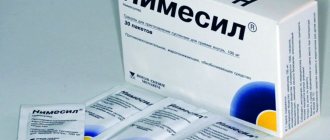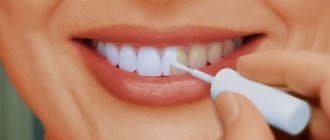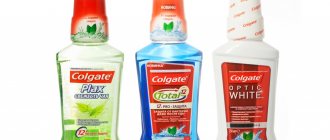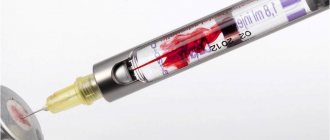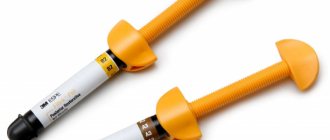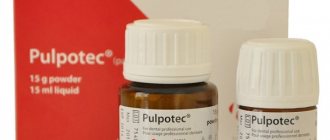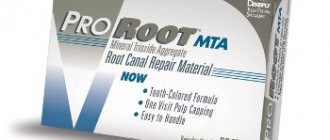Everyone would like to have a beautiful smile. Sometimes, to realize this desire, the help of a specialist is needed. It is of great importance what materials the doctor uses in his work. Currently, there are composites that will eliminate defects and damage to the front teeth, so that they will be completely invisible. The quality of such materials is many times higher than the quality of materials of previous years. Let's look at one of the new generation composites, Filtek Z250. In what form is it produced, what is included in the composition, as well as what is the technique for carrying out the work, what are the indications and contraindications for use? We will learn about all this further.
What is this?
The new generation filling material “Filtek Z250” is a microhybrid composite. It is a light-curing, radiopaque restorative material.
Developed by the famous company ZM ESPE. The latest technologies have made it possible to introduce nanoparticles, nanoclusters and their combinations into the composition of the composite. Thanks to this, the material has acquired significant strength.
A large number of shades of the composite allows the material to be used in the oral cavity on both the front and lateral teeth.
Filtek Z250 is easy to work with, it is elastic, soft for modeling and at the same time very durable after hardening.
Release form and composition
The basis of the Filtek filling material is acrylic polymer resins of various types. Each type of composite has its own specific composition , depending on the purpose of application.
To impart color to a future filling, fillers are used in the form of silicon and zirconium nanoparticles, and their combinations - nanoclusters. The sizes of these particles range from 0.6 to 20 nm.
The color of the future filling depends on the filler included in the base material. More precisely, it depends on the size and quantitative ratio of nanoparticles and nanoclusters in it. The smaller their size, the denser and more matte the filling will be.
Composite mass of various compositions, placed in syringes, is included in the package of ready-made kits for work. Depending on the goals and objectives, there are several varieties.
Single Shade Set
A set of this type contains syringes with composite material in the amount of 2 pieces. The filling material has colors A2, A3, which have the classification “body” - universal.
The kit comes with instructions for use with technical specifications.
Dual Shade Kit
This kit contains a set of 4 syringes. Available shades - 2 syringes for dentin restoration - A3, A4; 2 syringes for enamel restoration – A2, A3.
Additionally, the set contains an auxiliary scale for selecting the desired color. The kit is supplied with technical instructions.
Composition and properties of glass ionomer cement for filling and indications for its use.
Let's talk here about the tactics of unfilling root canals.
At this address https://www.vash-dentist.ru/lechenie/zubyi/plombyi/idealnyiy-variant-spektrum.html we offer a detailed description of the Spectrum filling.
Professional set
The professional set contains 12 working shades of the material:
- A2, A3, B3 – for restoration of dentin zones;
- A1, A2, A3, W – for work on the enamel layer;
- B2, A2, A3, A3.5 – universal “body” shades;
- AT is a shade with a transparent effect.
As in the previous case, the kit contains an auxiliary color selection scale and instructions for use.
In addition to specially selected kits, separate syringes filled with composites of certain compositions are produced. The most common ones are Filtek Z250 and nanohybrid Z550.
Filtek Z250
Available in separate 4 g syringes. It is a microhybrid material and contains an increased amount of nanoparticles. It has particularly high strength and adheres well to the walls of the tooth.
The range of applications is very wide:
- filling all types of cavities on the front and side teeth;
- performing veneers;
- splinting.
The color range of this type of composite includes 15 shades, which ensures its use in the restoration of any area of the dentition.
A filling made from Z 250 completely eliminates the possibility of recurrent caries.
Nanohybrid Z550
This series of composites is a modification of the Z250 series. It consists of nanoparticles and nanoclusters. Also available in syringes of 4 g.
Presented in 12 types of shades, each of them is radiopaque and fluorescent.
It is mainly used for reconstruction of the frontal and lateral parts of dental groups. It is simple and convenient to use; it does not stick to tools or gloves.
Allows you to perform any tooth modeling and subsequently retains the completed shape well.
What's in it
The material "Filtek Z250" contains inorganic particles (about 60%). Their size ranges from 0.01 to 3.5 microns.
The filler contains zirconium. And also the following resins:
- Bis-GMA
- Bis-EMA
- UDMA
The composite is available in several colors using the following fillers:
- Non-aggregated zirconium filler 4-11 nm.
- Silicon filler 20 nm.
- Dispersed zirconium and silicon cluster filler.
The diameter of the particles affects the color of the material; it is 0.5-5 microns.
Transparent shades have particles measuring 0.6-20 microns.
Indications for use
The material "Filtek Z250" is indicated for use for the following work:
- Splinting.
- Restoration of front and molar teeth.
- Indirect restoration.
- Extension of tooth stump.
- For installing inlays, onlays or veneers.
- "Sandwich" technique.
The use of the material for filling cavities of classes 1-4 in frontal and molar teeth indicates its high quality. Let's consider what contraindications to restoration exist.
When not to
It should be noted that there are very few contraindications to the use of modern light-curing materials. Let's list them:
- The patient has an allergic reaction to the composite. Very rare.
- The patient has a pacemaker, the operation of which may be impaired due to the inclusion of a photopolymerizer.
- There is no way to dry the mouth or tooth from moisture.
- Metal-ceramic structures are installed on adjacent teeth.
- You should not combine composites with eugenol, phenol, iodoform and substances that have a phenolic ring in their molecules.
- The tooth is destroyed below the gum level.
We also list several relative contraindications:
- Bruxism.
- Direct bite and pathological abrasion of teeth.
- Close contact between upper and lower teeth along with deep incisal overjet.
- The patient does not maintain oral hygiene.
All these reasons can be eliminated, taking into account their characteristics, and then use a modern composite.
Advantages of the material
Not every filling material has these advantages:
- The high level of density ensures excellent edge seal.
- Photopolymerizability.
- An alternative for the implementation of multi-layer restorations.
- After use, an excellent aesthetic appearance is guaranteed.
- Easy to polish.
- High level of wear resistance.
- Low shrinkage, about 2%.
- Easy to use, does not stick to tools.
- Large selection of shades.
Having such advantages, the material is very popular among dentists.
Work technology
Let's consider what the technology for working with the Filtek Z250 material is. The instructions recommend the activities described below.
Preparatory procedures:
- Clean your teeth from plaque. You need to use pumice and water. This will help you determine the color correctly.
- Determine whether there are concomitant diseases and contraindications to the installation of a filling.
- Determine the depth of the restoration. The shade will depend on the thickness of the material.
Typically, the dental plate is divided into three parts:
- Cervical. Use material in yellow shades.
- Average. Yellowish, brownish and gray shades are used.
- Cutting edge. Use blue and gray tones.
For restoration, it is necessary to work with the material to determine the thickness and shape, as well as to select the required shade. A trial application will help you achieve optimal results.
Next, the tooth is isolated from the gum and cheek. To do this, use a rubber dam or cotton rolls with a saliva ejector.
Preparatory activities
Working with the proposed composites requires certain preparatory work.
The first step is standard brushing of teeth using normal hygiene products. Then the dentist performs a complete sanitation of the oral cavity. It includes treatment, inflammation removal and professional cleaning.
The final stage of preparation is the correct selection of the shade of the proposed filling. It is executed in the following order:
- Dividing the tooth into segments. The body of the tooth has some heterogeneity in color tone in different areas.
To reconstruct it correctly, the entire area is divided into 3 segments. Each of them is filled with a composite that matches the color for the given area.The area near the neck of the tooth is restored with yellow material. For the middle, composites of gray, yellow or brown color are used. The upper (incisal) border is made in grayish or blue shades.
- Selection of shade. The color and its saturation of each of these areas is checked using an auxiliary color scale, corresponding to that part of it that is identical to the thickness and color of the desired area of the tooth.
- Checking the correct selection. To control the correct choice of shade, the composite is applied to the desired location.
After its polymerization, a visual assessment is made using different types of light. If necessary, adjustments are made until the desired effect is achieved. - Isolation and protection of the treated area from other teeth is carried out using a latex napkin (rubber dam). If it is not available, then the use of cotton swabs or a saliva ejector is used.
This concludes the preparatory work before the restoration of damaged surfaces begins. It must go through the full cycle, regardless of which method of tooth reconstruction is chosen.
Direct recovery
It assumes the following execution technique:
1. Cavity preparation:
- Restoration of anterior teeth.
- Restoration of lateral teeth.
2. If the pulp is exposed, it must be protected. Apply calcium hydroxide and gasket material.
3. Matrix placement:
- Restoration of anterior teeth. Plastic, tape or molded dies can be used.
- Restoration of lateral teeth. Place the matrix and secure it. You can do this after the enamel has been etched and apply adhesive.
4. Adhesive system. The instructions for the selected system must be followed for etching, priming, adhesive application and polymerization.
5. Composite preparation:
- Using a syringe. After squeezing the composite onto a special mixing bar, the syringe is closed and the material is protected from sunlight.
- Disposable capsules.
6. Application of restoration material:
- The material must be applied and polymerized gradually, in small layers.
- The cavity must be filled with excess material so that the composite spreads beyond its edges.
- It is necessary to prevent light from entering the working area.
7. Light polymerization process:
- The Filtek Z250 material cures only in light.
- It is necessary to use a high-intensity device for light polymerization. The LED should be kept as close to the restoration material as possible. The duration of exposure depends on the shade.
8. Composite processing. Use bur and finishers to remove excess material. Occlusion is determined using carbon paper.
9. Grinding and polishing. Final point. The restoration is considered complete after final surface treatment.
There are other methods of working with composites.
Indirect restoration
Indirect restoration includes the following stages of work:
- Preparatory work as described above. Selecting the shade and cleaning the surface.
- The tooth is processed for the chosen type of structure.
- The impression is taken.
- A plaster model is made in the laboratory.
- A layer of separator is applied to it so that it can be easily removed.
- As with direct restorations, the composite is applied in layers.
- The design is polished and tried on the model.
- The prosthesis is installed in the patient’s oral cavity and fixed. If revision is necessary, it is returned to the laboratory.
- It is necessary to create a non-smooth surface on the inner surface.
- The prosthesis must be cleaned in soapy water using ultrasound.
- Rinse under running water and dry thoroughly.
- Then the prosthesis is fixed with composite cement.
Some tips for working with Filtek Z250 material:
- Each layer is applied layer by layer.
- For the shade “Filtek Z250” UD, the layer should be no thicker than 2.0 mm.
- Curing time is 20 seconds for shades A1, A2, A3, A3.5, A4, B1, B2, B3, C3, D3, I.
- Each layer should be polymerized.
- Curing time is 30 seconds for shades B0.5, C4, UD.
- Do not create layers thicker than 2.5 mm.
When dealing with modern restoration materials, there are certain rules. This also applies to Filtek Z250. We will consider a description of the subtleties that need to be taken into account when working.
special instructions
Syringes should be stored at room temperature with the lid tightly closed. Shelf life – 3 years. It is necessary to completely exclude exposure to light, as the material may lose its properties. Also, the composite should be kept away from products containing eugenol.
Due to the content of polymer resins, there is a possibility of developing allergies upon direct contact with the material. To reduce the risk of allergic reactions, the composite must be used with protective gloves, completely eliminating any contact.
In case of contact with skin, wash it immediately under running water. If the material ends up on the gloves, they are removed and the hands are treated with soap. Then new gloves are put on.
Rules for working with material
It is worth considering that Filtek Z250 contains methacrylates. There is a category of citizens who have a tendency to develop an allergic reaction to acrylic resins. It is necessary to adhere to the following recommendations when working with the material:
- Reduce exposure to the drug to reduce the risk of allergic reactions.
- Be especially careful when exposed to uncured resins.
- When working with the material, be sure to use protective gloves and non-contact equipment.
- If the filling composite gets on an unprotected area of the body, immediately wash it with running water and soap.
- Attention! Acrylates can penetrate gloves.
- If restoration material gets on the glove, it must be removed and thrown into the trash. Wash your hands thoroughly with soap. To continue working, you must wear new gloves.
- If the material gets into the eyes or other parts of the body, immediately rinse the area under running water.
- If there is prolonged contact of the material with soft tissues in the oral cavity, the area should also be rinsed generously with water.
- The time spent working with restoration material should be reduced to a minimum.
- Syringes with the composite should be stored at room temperature in tightly closed boxes, away from light.
Recommendations and warnings
The presence of polymer resins in the Filtek composite requires careful handling of the material. It is necessary to ensure that the substance does not come into contact with the skin , so manufacturers recommend carrying out the filling procedure with gloves and carefully isolating the soft tissues of the patient’s oral cavity.
If the composite comes into accidental contact with your skin, you should immediately wash your hands with plenty of water. Contact of a substance with a glove requires removal of the glove, washing of hands with soap and use of a new pair of gloves.
Filtek filling material must be stored in tightly closed syringes for 3 years from the date of manufacture.
To ensure that the quality characteristics of the drug are preserved, exposure to direct sunlight should be avoided.
Analogs of material
There are composites that can be considered an analogue of Filtek Z250, but they have some differences in their composition. This is FiltekUltimate, a nanohybrid "Filtek Z550".
The FiltekUltimate series is distinguished by the fact that it contains additional polymer resins:
- Bis-GMA.
- Bis-EMA.
- UDMA.
- TEGDMA.
- PEGDMA.
This is an improved formula that has positive qualities:
- Lower shrinkage.
- It is characterized by high strength.
- Excellent polishing.
- The "chameleon" effect.
- The shine remains for a long time after tooth restoration.
- Higher quality restoration.
A modification of the Z250 series is the Filtek Z550 series. Nanoparticles were added to the composition, which improved the properties of the material:
- Work has become even easier and simpler.
- Strength is higher.
- Plasticity has increased.
- The material lends itself easily to modeling.
- It has become more convenient to apply to the surface.
But some qualities remained at the same level:
- Polishability.
- Shrinkage.
Precautionary measures with these materials are the same as with Filtek Z250.
general information
Filtek is a composite material widely used for dental restoration.
It was developed by specialists from the famous ZM ESPE corporation at the beginning of this century. For the first time, specialists used the latest technologies - the introduction of nanoparticles, nanoclusters and their combinations into the composition of the composite. This ensured the material long-term strength and exceptional aesthetics.
A large number of shades of the composite are presented, and this makes it possible to use it on any part of the dentition. At the moment, Filtek is firmly established in the arsenal of modern dentists.
Material properties
According to the classification, Filtek Ultimate belongs to nanocomposites. The main properties of this filling material are:
- low shrinkage after light curing;
- excellent strength;
- sufficient wear resistance;
- plastic;
- easy adaptation to carious cavity;
- good packability;
- good polishability;
- long-term preservation of surface gloss;
- "chameleon" effect.
Advantages
The filling composite of the Filtek line is one of the latest generation materials. It is logical that it has a number of advantages over previous options:
- shrinkage after polymerization and exposure to light is minimized;
- high strength;
- duration of use as a filling;
- good fit into the required cavity;
- high polishing effect;
- long-lasting shine;
- the ability to create the desired color effect.
All these qualities have made this material indispensable in the work of modern dentists.
Indications for use
Filtek composites can be used if it is necessary to perform the following manipulations:
- restoration of all types of carious cavities according to Black on the frontal and chewing elements of the row;
- aesthetic restoration of teeth included in the smile zone;
- performing indirect restorations : fixing inlays, veneers, onlays;
- splinting teeth>;
- superstructure of the stump for further orthopedic treatment;
- restoration using sandwich technology.
Cost and purchase of material
The price of the Filtek Z250 kit depends on its configuration. There are kits from the SingleShade and DualShade trial series. Their cost is within 10,000 rubles.
The Filtek Ultimate set costs 22,000-25,000 rubles.
You can purchase one syringe with the composite. Cost from 2300 to 2500 rubles.
For the patient, the cost of a filling made from Filtek material depends on the volume of restoration work. So, the price of one tooth is in the range of 1500-1650 rubles.
You can purchase the Filtek Z250 set through official companies that are distributors of the ZM ESPE company. This way there is a guarantee to avoid counterfeits. The product is ordered directly from the manufacturer. The corresponding contacts can be found on the Internet on the official website of the company.
There are also various promotional offers that will allow you to purchase Filtek Z250 products in bulk at lower prices.
ZM ESPE has representatives in many countries. So, you can order “Filtek Z250” in Belarus in bulk through a distributor company, directly from the manufacturer’s factory. Or purchase it in stores that distribute the company's products.
Reviews about the material
Reviews from dentists about the Filtek Z250 material are mostly positive. It is easy to work with, it is very flexible and durable. Allows you to achieve a good aesthetic result. It can be used for the restoration of teeth, both frontal and lateral.
Filling material is very popular among dentists. It is used in almost every clinic.
Patients who chose Filtek Z250 fillings for restoration give only positive feedback. They note the durability and aesthetics of the material, as well as good resistance to abrasive substances. The restored teeth are practically indistinguishable from your own. The turnaround time is much shorter than before.
Once a year it is necessary to conduct a preventive examination and professional oral hygiene. This also includes polishing installed fillings or other structures. Patients need to maintain oral hygiene and pay attention to dental care. The service life of the Filtek Z250 material is 3-4 years, but with proper care, such fillings last much longer.
Regular and thorough dental care will keep your teeth healthy for many years. But if problems arise, it is better to immediately contact a specialist, this way you can avoid serious complications and save on getting a filling. When choosing a filling material, it is better to focus on its quality rather than cost.
Bottom line
Now it has become clear to you that Filtek is a nanocomposite of versatile use, which can be used not only for teeth intended for chewing, but with its help you can also restore the front teeth.
Now you have become aware of all the advantages of this composite, and it will not be difficult for you to choose the material that suits you, both for the restoration of chewing teeth and for the aesthetic restoration of the front teeth.
Sources:
- https://www.vash-dentist.ru/lechenie/zubyi/plombyi/vozmozhnosti-materiala-filtek.html
- https://dentazone.ru/preparaty-oborudovanie/materialy/filtek.html
- https://zubovv.ru/lechenie/zubyi/plombyi/svoystva-materiala-filtek.html
- https://FB.ru/article/420332/filtek-z-obschaya-informatsiya-forma-vyipuska-sostav-naznachenie-tehnologiya-provedeniya-rabotyi-pokazanie-i-protivopokazaniya-k-primeneniyu
- https://El-dent.ru/id/filtek-ultimate-kompozit-enamel-b2e-3920b2e-3m.html
- https://medicina-top.ru/%D1%81%D0%B2%D0%B5%D1%82%D0%BE%D0%B2%D0%B0%D1%8F-%D0%BF%D0% BB%D0%BE%D0%BC%D0%B1%D0%B0-%D1%84%D0%B8%D0%BB%D1%82%D0%B5%D0%BA/
This is interesting: Diathermocoagulation of gums in dentistry, step-by-step description, what are the pros and cons
